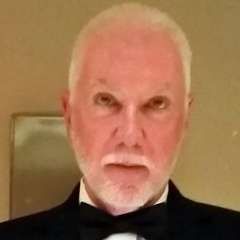Celebrity, fame and public attention paid to individuals are rampant in our media-saturated culture. Of course, the world of classical music has its own celebrities, well known to devotees and fans. This week’s program by the Atlanta Symphony Orchestra was a lesson about classical music celebrityhood.
On the podium was Hungarian-born guest conductor Henrik Nánási, who is probably more of a celebrity in the opera house than in the concert hall.
The first piece on the program was the 1933 Dances of Galánta by Hungarian composer Zoltan Kodály, and if the frequency of performance of a composer’s works was an indicator of celebrity, Kodály would likely be on the D-list. In fact, the last Atlanta performance of these dances was a decade ago. The piece is an amalgam of various dance-like tunes that the composer attributed to the Roma musicians he heard in a small market town between Vienna and Budapest.
The work's five sections employ the clarinet prominently, here played with élan. The energy of these dances builds until it erupts into a colorful and energetic finale. Nánási and the ASO created a thick orchestral sound that was surprisingly heavy and dark, yet never contrary to the dance-like nature of the piece. Based on this performance, it is reasonable to lament that Kodály is not a bigger celebrity in the concert hall. With some sense of irony, it should be noted that Kodály’s system of hand signs representing musical tones played a most important role in communicating with the aliens in Spielberg’s film Close Encounters of the Third Kind.
The next work was the 1898 Violin Concerto by Julius Conus, a curious non-celebrity composer. His Wikipedia page talks about his father, brother, and children, but not much about his own work as a composer, and the last time Conus' work was played in Atlanta was 26 years ago. The ASO program notes say that he assisted Russian celebrity composer Tchaikovsky in the violin fingerings for his Sixth Symphony.
The violin soloist for this performance was ASO's concertmaster David Coucheron, who in Atlanta is at the top of the classical music celebrity list. He, more than almost any other musician, could be said to be “the public face of the ASO.” His performances always fill the house and this concert was no exception. The piece is relatively short, at about 19 minutes, and it consists of three movements, played without break, but musically it is two movements – one long first movement with a second movement inserted in its middle, separating its beginning from its ending. In spite of the technical fireworks it contains, its richness of ideas and hints of skill in construction, this concerto lacks memorable melodies. It is best viewed as a vehicle for the soloist to demonstrate technical mastery, which is Coucheron’s strength. As a soloist, he has integrity and his playing never condescends toward lesser musical material such as this concerto.
Coucheron has the ability to generate grand volume without ever sounding shrill or stringy. That strength made for great balances between orchestra and soloist so that the former never overwhelmed the latter. Credit also goes to Nánási for helping to achieve excellent balance. This was a great performance of a not-so-great work.
The audience showed its appreciation, and in response, Coucheron returned to the stage with principal second violin Julianne Lee in a brilliant encore of Johan Halvorsen’s Concert caprice on Norwegian melodies for two violins. They played with humor and demonstrated great mastery of the sometimes highly challenging material.
The final work was the 1878 Symphony no. 4 in F minor by Tchaikovsky, who, as already noted, is a major concert hall celebrity. Last performed two years ago in Atlanta, it might cause one to wonder “Why again?”, but Nánási presented a lean and taut interpretation that was surprisingly transparent, clearly delineating the inner voices of Tchaikovsky’s masterpiece.
This performance avoided bombast, without relying on the brass as the motivator, which made the symphony sound rather refined. The restrained second movement was a reminder of why Tchaikovsky is a celebrity for penning masterful melodies. The third movement pizzicato sections were delicately played with great precision and ensemble by the ASO strings. The final movement was dramatic and colorful, but well focused. And in the very big finale, the triangle could clearly be heard – something that rarely happens in more highly-driven performances. Nánási provided a very satisfying performance that was almost like hearing the work with new ears and he should be welcomed back to the ASO podium as a celebrity on the rise.


